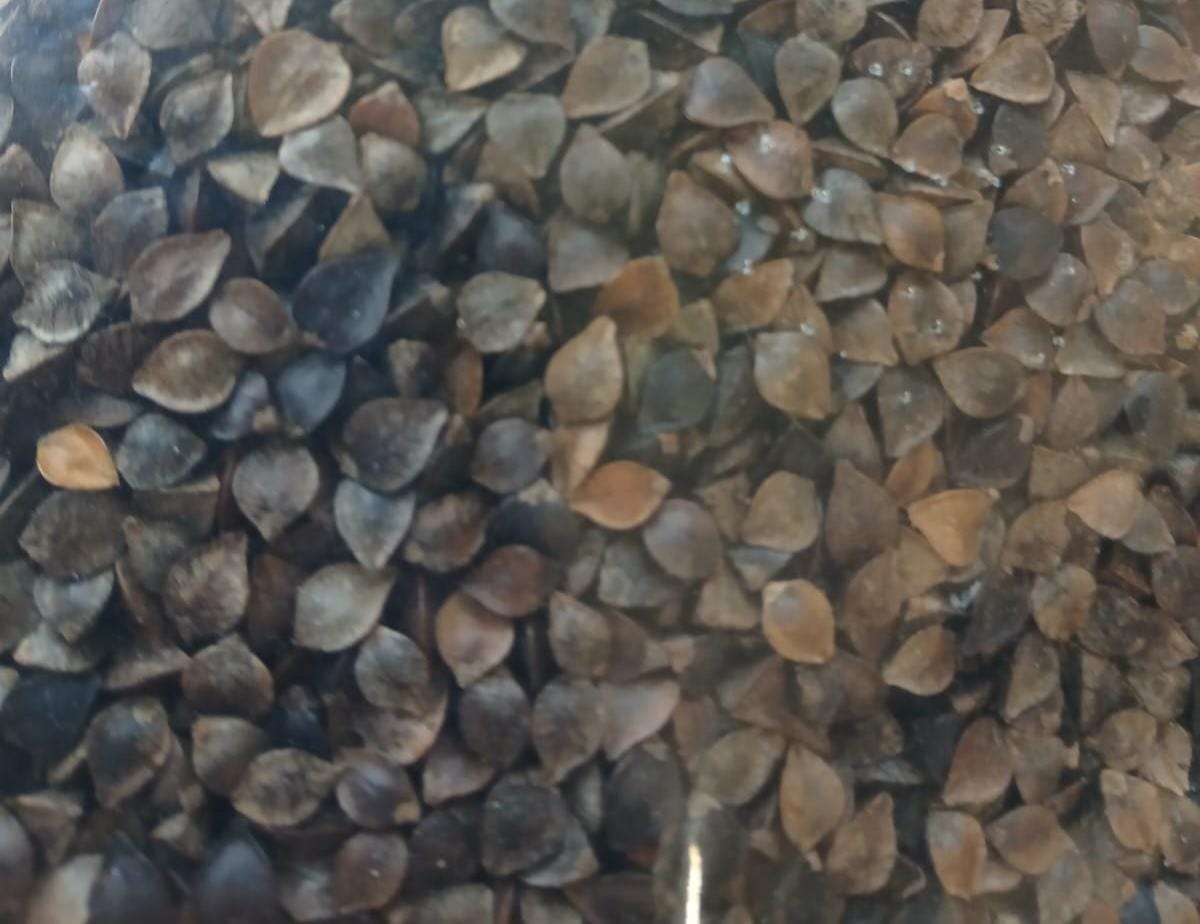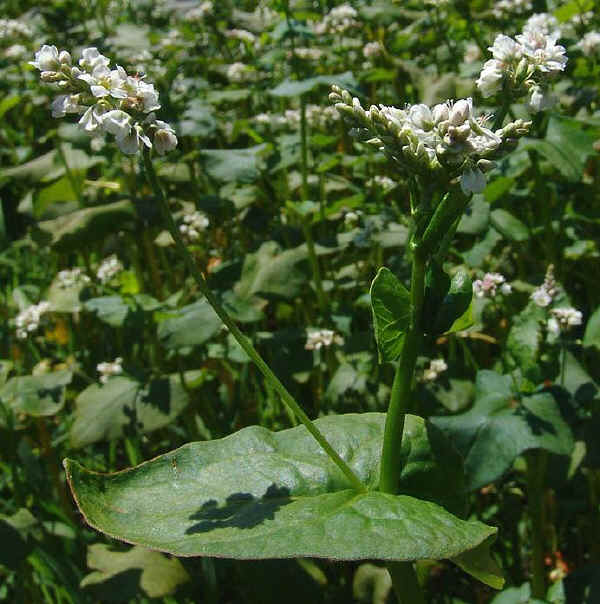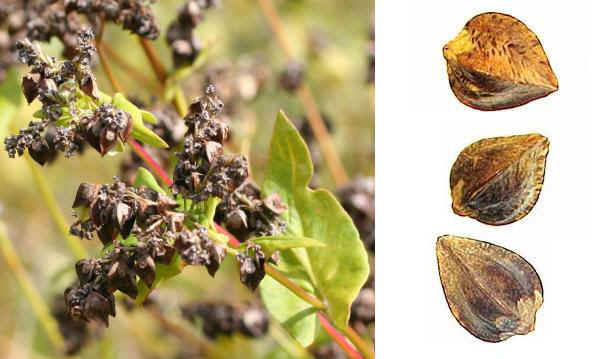BUCKWHEAT - ORGANIC 100% Italian origin
Have a question?

BUCKWHEAT - ORGANIC 100% Italian origin
Dettagli
Buckwheat, originally from Asia (Manchuria or Siberia), was introduced to Europe, through Russia, in the Middle Ages. Today it is still widespread in Russia, while in Europe it is limited to some areas of France and Germany. In Italy it is present in the provinces of Bolzano and Sondrio.
This plant is a cereal due to the composition of its grain which, being rich in starch, is used for the production of bread flour.
 Buckwheat Inflorescence - Fagopyrum esculentum Moench. (photo www.kuleuven-kortrijk.be )
Buckwheat Inflorescence - Fagopyrum esculentum Moench. (photo www.kuleuven-kortrijk.be )
Botanical characters
Buckwheat is a herbaceous plant with a poorly developed taproot, cylindrical, glabrous, erect, hollow stem, red or greenish in colour. The leaves are alternate, lanceolate, equipped at the base with a characteristic stilar formation, called ocrea. The axillary or terminal inflorescence is made up of corymbiform, hermaphroditic racemes, without petals, with five sepals with pinkish-white or greenish flowers. The flowers have a dimorphic heterostyly: in fact, flowers with long pistils and short stamens (pin type) and flowers with short pistils and long stamens (thrum type) can be found. Cross-pollination can be both anemophilous and entomophilous. Not all flowers give rise to seeds. The fruit is a triangular-shaped achene, in the center of which is the embryo. 1,000 seeds weigh approximately 20 grams.
 Buckwheat - Fagopyrum esculentum Moench.
Buckwheat - Fagopyrum esculentum Moench.
Environmental needs and cultivation technique
Buckwheat varieties are distinguished by the size of the fruit, its color and the presence or absence of roughness
Buckwheat is characterized by rapid tillering, making it highly competitive with any other plant, and by a high sensitivity to low temperatures and prolonged drought.
For these reasons, in areas with a continental climate, sowing must be done in late spring, on well fertilized soil (with organic or mineral fertilizer) and plowed superficially, distributing from 50 to 100 kg/ha of seed in relation to the weight and sowing method (broadcast or rows). Regarding the nutritional needs of this plant, it can be said that it is particularly demanding of potassium in the specific case in which the crop is intended only for the production of grain.
During the growth period the plant does not require any specific cultivation practice.
If you want to obtain a good harvest, it is important to have two beehives per hectare in the field.
Collection and use
The harvest cannot take place when the seeds are completely ripe, all that is needed is for the majority of the fruits to have taken on a more or less dark colour: it is done by hand with a sickle or sickle. The sheaves are left in the field for 15-20 days, so that the seeds can fully ripen; then the threshing is carried out. Per hectare there is a yield of 15-20 quintals of grain and 30 quintals of straw.
The forage crop, on the other hand, is mowed shortly after the start of flowering and there is a green production of 120-150 quintals per hectare. In less fertile soil it can be grown as a green manure plant.
Buckwheat seeds are very rich in proteins, largely represented by glutelins, and are therefore a food very rich in lysine and poor in glutamic acid and proline. The flour is used in human nutrition (bread, biscuits, polenta); its excessive consumption, however, causes a skin rash in the areas most exposed to the sun (phagopyrism). If used in the zootechnical field, it should preferably be mixed with others, because its large consumption can cause fagopyrism, even in animals.
Until the mid-twentieth century, this plant was also cultivated for pharmacological use: rutin, a glycosidic flavone used in the treatment of disorders due to anomalous fragility of the veins, was extracted from it.


